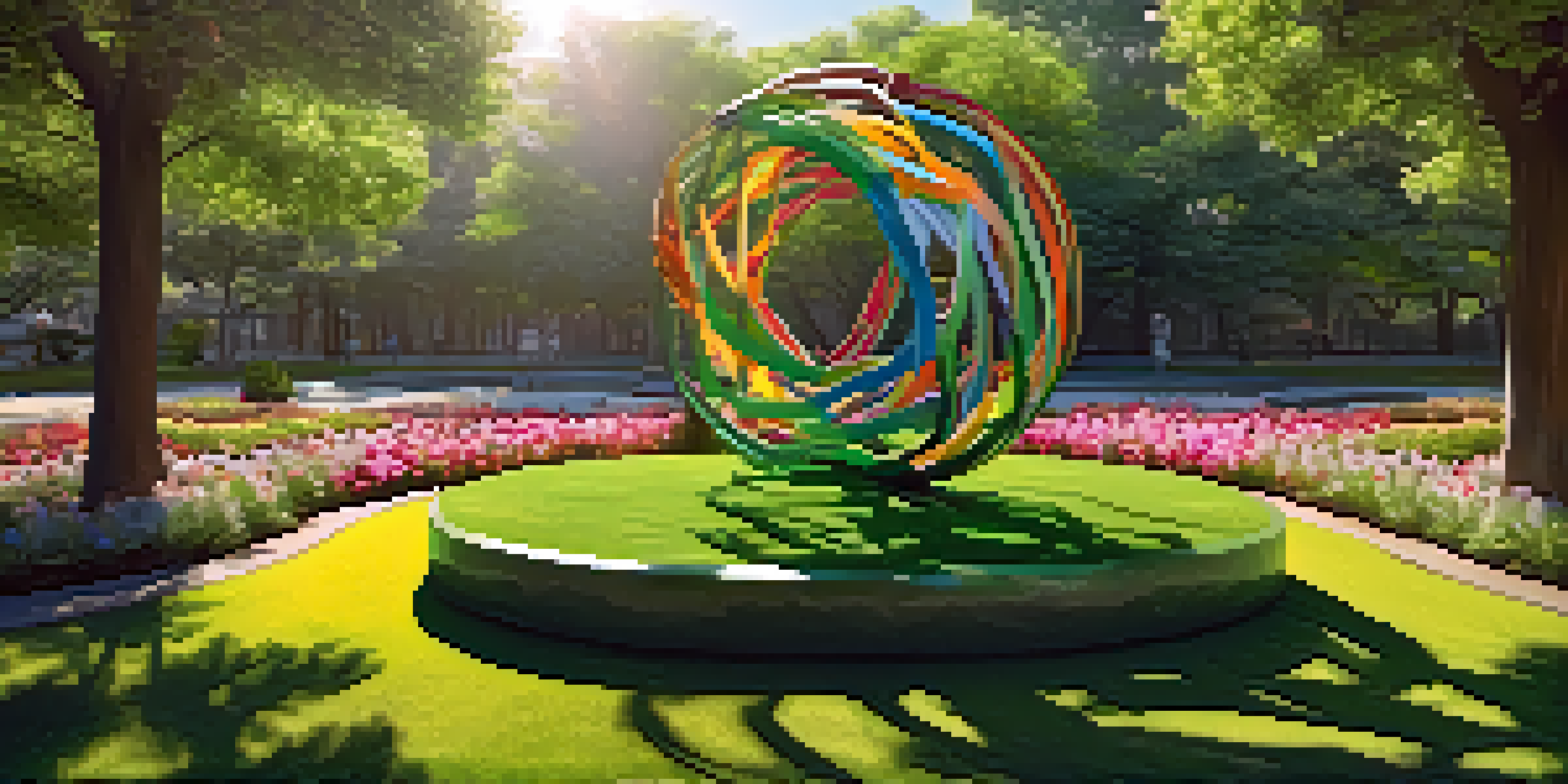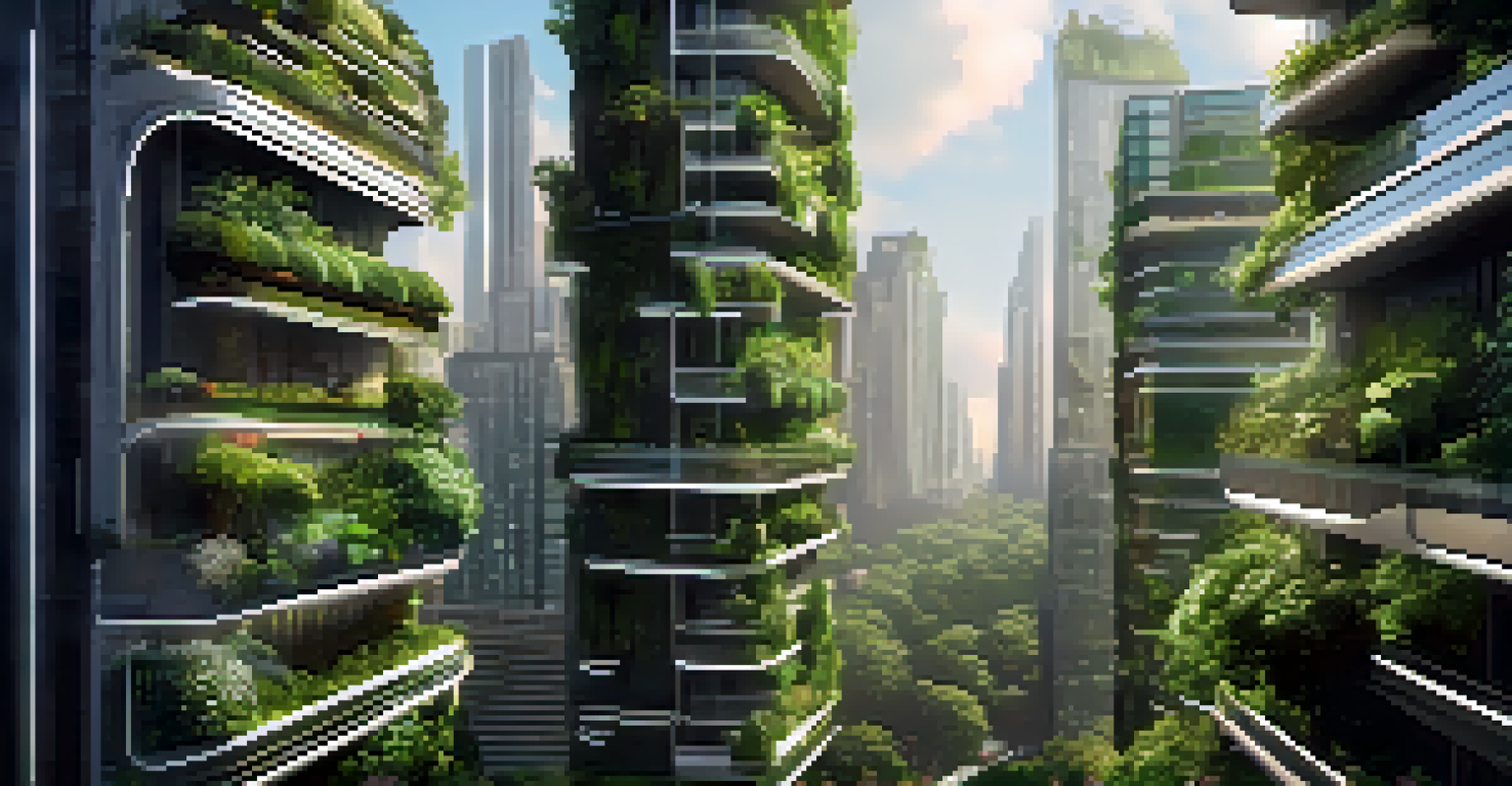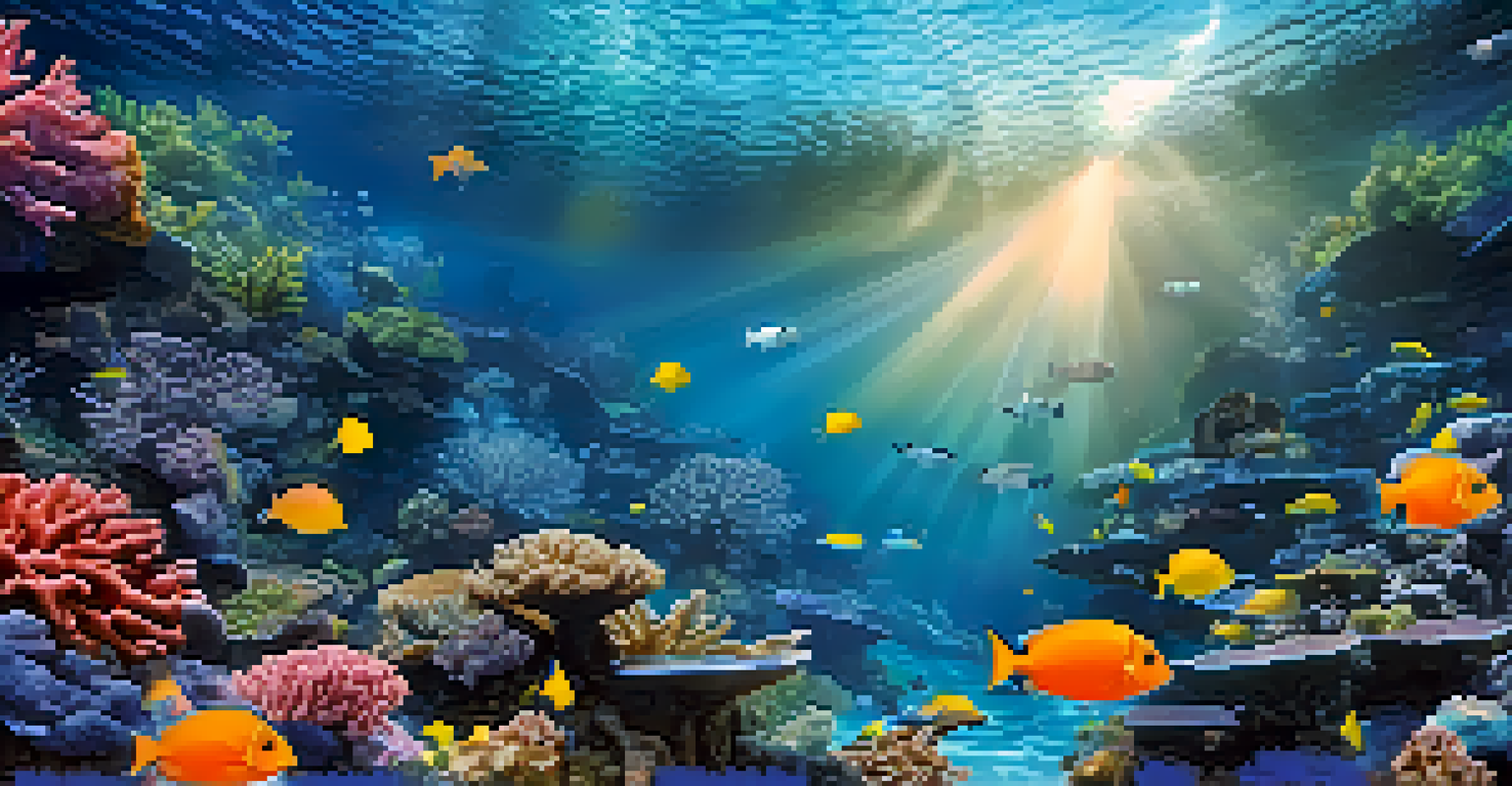The Role of Technology in Creating Eco-Conscious Art

Understanding Eco-Conscious Art and Its Importance
Eco-conscious art is more than just a trend; it's a movement that reflects our responsibility towards the planet. Artists are increasingly aware of the environmental impact of their materials and processes, leading them to create works that not only inspire but also provoke thought about sustainability. This art form challenges traditional notions of beauty by incorporating messages about conservation and ecological preservation.
Art is a way of showing the world how we feel; it allows us to express our hopes for a sustainable future.
The importance of eco-conscious art lies in its ability to raise awareness and spark discussions around climate change and environmental degradation. By using their platforms, artists can influence public perception and inspire collective action. This cultural shift encourages individuals to rethink their relationship with nature and the resources they consume.
As technology evolves, it plays a crucial role in how artists approach eco-consciousness. From digital mediums to sustainable materials, technological advancements provide innovative solutions for creating art that respects the environment. This synergy between art and technology is paving the way for a more sustainable future.
How Digital Tools Enhance Artistic Expression
Digital tools have revolutionized the way artists create, allowing for greater experimentation and flexibility. Software programs and applications enable artists to explore new techniques without the need for traditional, often resource-intensive materials. For instance, digital painting and 3D modeling can produce stunning visuals while minimizing waste.

Moreover, these tools allow artists to work on large-scale projects without the logistical challenges of physical materials. For example, a mural can be designed digitally and projected onto a wall, reducing the need for paint and other supplies. This approach not only saves resources but also offers artists a chance to visualize their work in real-time.
Eco-Art Raises Environmental Awareness
Eco-conscious art engages audiences and promotes discussions about sustainability and climate change.
Additionally, digital art can be easily shared and reproduced, reaching a wider audience without the environmental cost of physical distribution. This democratization of art creates opportunities for collaboration and inspiration, further enriching the eco-conscious art community.
The Rise of Sustainable Art Materials
As artists become more eco-conscious, the demand for sustainable art materials has surged. Many manufacturers are now producing paints, papers, and canvases made from recycled or renewable resources. For instance, paint made from natural pigments and organic binders minimizes harmful chemicals that can seep into the environment.
The greatest threat to our planet is the belief that someone else will save it.
Artists are also experimenting with upcycled materials, transforming discarded objects into stunning pieces of art. This not only reduces waste but also sends a powerful message about the importance of reusing and recycling. By showcasing these materials, artists create a dialogue around consumerism and its impact on the planet.
Moreover, the shift towards sustainable materials encourages innovation within the art community. Artists are constantly exploring new ways to incorporate eco-friendly practices into their work, inspiring others to follow suit. This ripple effect is crucial in fostering a culture of sustainability in the arts.
Virtual Reality: A New Canvas for Eco-Conscious Art
Virtual reality (VR) is transforming the art world by providing immersive experiences that engage audiences in unique ways. Artists can create entire worlds that reflect their ecological themes, allowing viewers to explore and interact with their messages. This level of engagement can leave a lasting impact on how people perceive environmental issues.
By utilizing VR, artists can also eliminate the physical constraints of traditional art forms. For instance, they can create expansive landscapes or intricate installations without the need for materials that may harm the environment. This freedom not only enhances creativity but also aligns with eco-conscious values.
Digital Tools Enhance Artistic Flexibility
Digital mediums allow artists to create with less waste and innovate their artistic processes.
As VR technology continues to advance, its potential for eco-conscious art will only grow. Artists are likely to find new ways to use this medium to inspire change and foster a greater understanding of our relationship with nature.
Social Media as a Platform for Eco-Conscious Art
Social media platforms have become vital tools for artists to share their eco-conscious work with a global audience. By showcasing their art online, they can raise awareness about environmental issues while connecting with like-minded individuals. This community-building aspect is crucial for fostering a collective movement towards sustainability.
Furthermore, social media allows for instant feedback and engagement, encouraging artists to refine their messages and techniques. For example, an artist can post a video of their process, inviting discussions about their choice of materials and the messages behind their work. This transparency fosters a deeper connection with their audience.
Additionally, social media campaigns can amplify the reach of eco-conscious art initiatives, mobilizing support for environmental causes. Artists can collaborate with activists and organizations, using their platforms to advocate for change and inspire action. This synergy between art and activism is powerful in promoting a sustainable future.
The Role of Artificial Intelligence in Eco-Conscious Art
Artificial intelligence (AI) is making waves in the art world, offering new tools for creativity and innovation. Artists can use AI to generate unique artworks or explore complex patterns that mimic natural processes. This technology opens up exciting possibilities for creating eco-conscious pieces that reflect the beauty of the natural world.
Moreover, AI can analyze data related to environmental issues, helping artists understand and visualize the impact of climate change on ecosystems. By incorporating these insights into their work, artists can create pieces that resonate with viewers on a deeper level, making the message about sustainability more poignant.
Sustainable Materials Drive Innovation
The rise of eco-friendly art supplies encourages creativity while addressing environmental concerns.
As AI continues to evolve, it will likely play an increasingly significant role in how artists approach eco-consciousness. This partnership between human creativity and machine learning can lead to groundbreaking art that not only captivates but also educates and inspires action.
Future Trends in Eco-Conscious Art and Technology
Looking ahead, the intersection of art and technology is poised to evolve even further, especially in the realm of eco-consciousness. As awareness of environmental issues grows, artists will likely continue to seek innovative solutions that minimize their ecological footprint. This drive towards sustainability will inspire new forms of artistic expression.
Technological advancements, such as augmented reality (AR) and blockchain, could also play a role in shaping the future of eco-conscious art. AR can enhance physical art installations with digital overlays that provide additional information about sustainability efforts, while blockchain can ensure transparency in the sourcing of materials used in art creation.

Ultimately, the future of eco-conscious art will depend on the artist's ability to adapt and innovate. As technology continues to provide new tools and platforms, artists will have the opportunity to push boundaries, creating works that not only challenge traditional norms but also advocate for a more sustainable world.